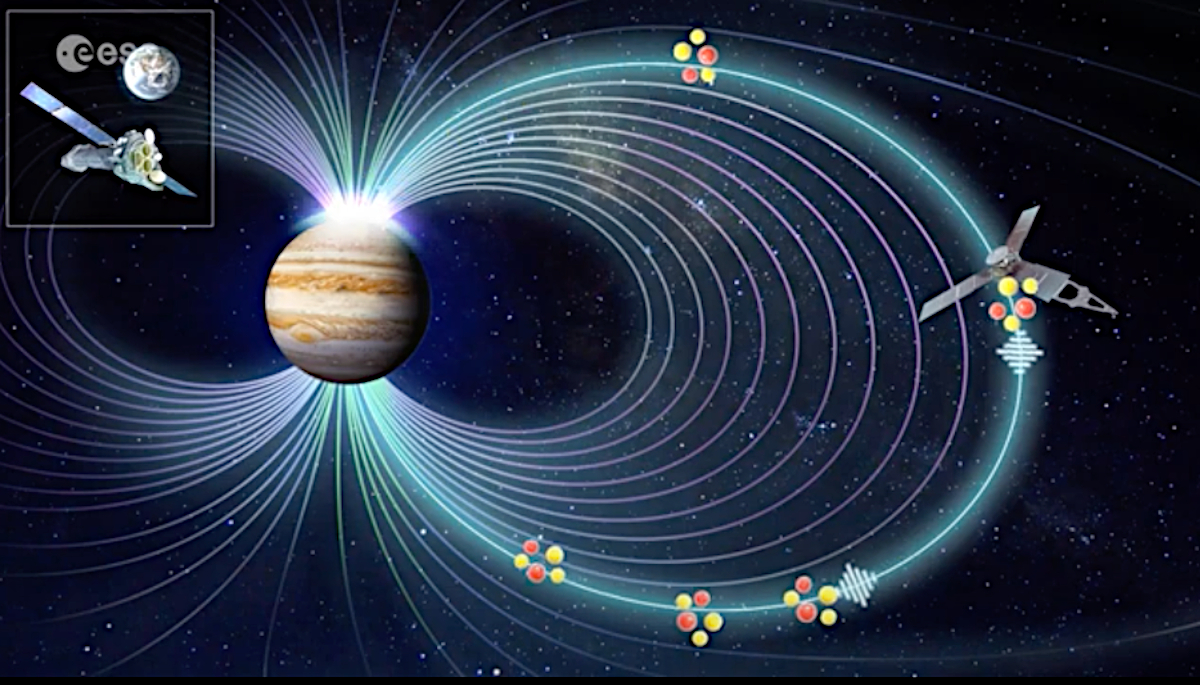
 Credit: Yao/Dunn/ESA/NASA
Credit: Yao/Dunn/ESA/NASA
Crowns of Jupiter Revealed
Like earth, Jupiter has its own version of the northern and southern lights, the aurorae. These lights are produced by the interaction of ions from space and the planet's atmosphere near the north and south magnetic poles. Jupiter's aurora is much more powerful than earth's, strong enough to generate X-rays. Jupiter's X-ray aurora also pulsates, and oddly, the southern aurora seems to pulse fairly regularly, while the northern aurora varies more randomly. The origin of the X-ray aurora, and its strange behavior, has been a longstanding mystery. But now, thanks to a long observation with the XMM-Newton X-ray observatory, and observations by Juno (a satellite mission in orbit around Jupiter), coupled with computer simulations, scientists have finally unravelled the 40-year old mystery of Jupiter's pulsating X-ray aurorae. These combined studies show that the interaction between Jupiter's strong magnetic field and the wind of particles from the sun trigger Jupiter-sized electromagnetic waves above the planet. These waves cause electrically-charged sulfur ions, produce by volcanic eruptions on Jupiter's moon Io and trapped in Jupiter's magnetic field, to periodically fall along the magnetic field lines towards Jupiter's magnetic poles. The illustration above shows how trapped ions (not to scale!) travel along Jupiter's magnetic field towards the magnetic polls, to create the X-ray aurorae. Understanding this process helps scientists understand where similar ion-magnetic field interactions might work around other planets, and elsewhere in space.
Published: July 12, 2021
<
HEA Dictionary ● Archive
● Search HEAPOW
● Other Languages
● HEAPOW on Facebook
● Download all Images
● Education ● HEAD
>

Each week the HEASARC
brings you new, exciting and beautiful images from X-ray and Gamma ray
astronomy. Check back each week and be sure to check out the HEAPOW archive!
Page Author: Dr. Michael F. Corcoran
Last modified Tuesday, 27-Feb-2024 10:08:20 EST


